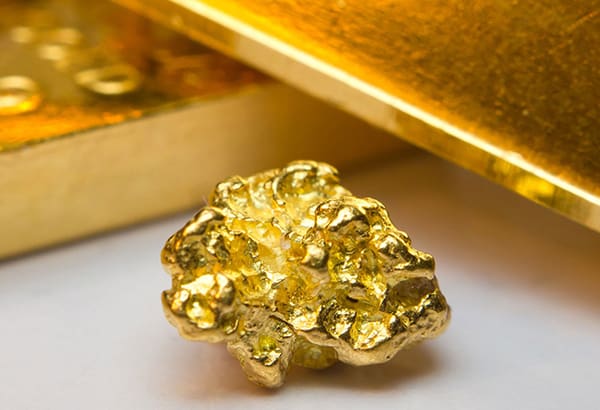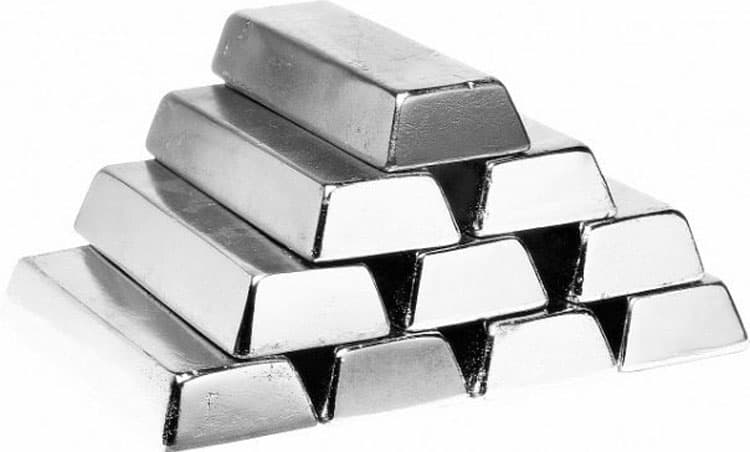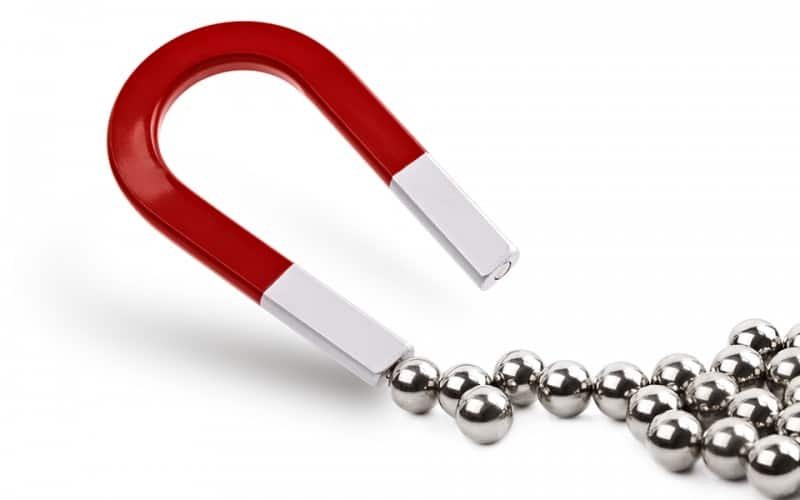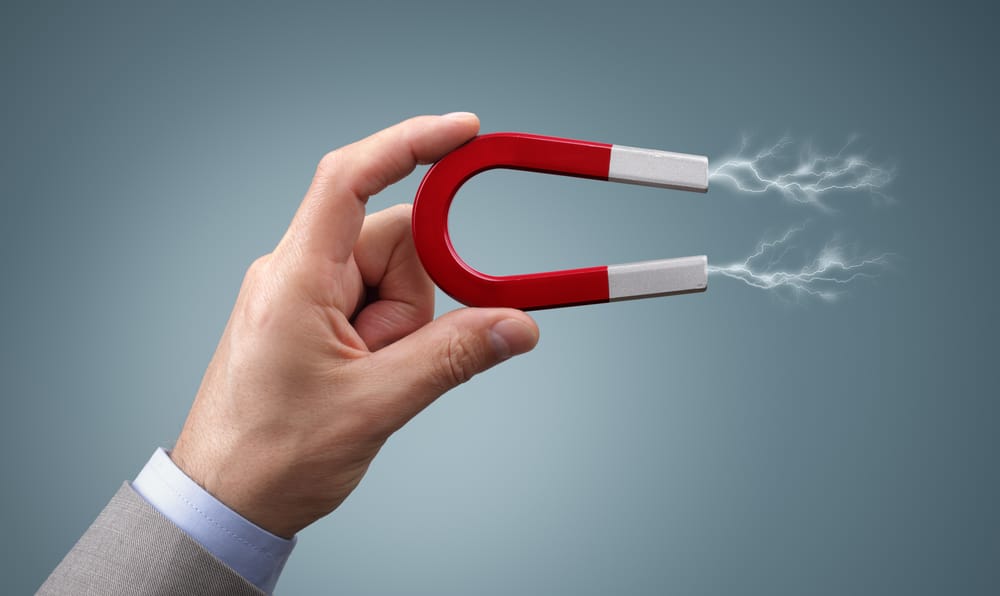Table of Contents
When it comes to precious metals, purer is generally better – but how do you check the purity without large, sophisticated instruments? There are several methods, but the first examination is the precious metals magnet test, which is used to check for the presence of cheap magnetic fillers like iron and nickel.
*This post may contain affiliate links. As an Amazon Associate we earn from qualifying purchases.
Before we discuss that, however, we need to review what you should expect from your precious metals.
Purity and Fineness
Precious metals are graded on ‘fineness’, or how pure the metal is. All metals contain trace impurities and making metal 100% pure is impossible to do in any cost-effective way.

Fineness is typically expressed as a decimal, with the first digit corresponding to the tens column of a number. Thus, a fineness of 750 (18 karat gold) means it’s 75% pure gold and 25% other metal. Gold and silver are sold in more levels of fineness than most precious metals, so it’s the most common subject of the precious metals magnet test. Some mints choose to place the decimal at the start or leave it out entirely – 99.99 fine, .9999 fine, and 9999 fine all mean the same thing.
Top grade metal is 99% pure or above, and at this level, purity is often expressed as a number of ‘nines’. Three nines are 99.9% pure, four nines are 99.99% pure, and five nines is – you guessed it – 99.999% pure.
Here are the common levels of purity for the three top metals:
Platinum

999.5: This purity level is enough for most dealers to treat it as 100% pure, and it’s priced accordingly. This is the most common purity for platinum bullion – including coins and bars.
950: This grade is the most popular for jewelry. Allowing up to 5% impurity gives strength and structure to platinum jewelry, making it safer and easier to wear.
Platinum is sold outside of these two levels of purity, but not very often. A relatively common mark in jewelry is PT/CO 950 (95% Platinum and 5% Cobalt), which doesn’t need the magnet test because you already know what other material is inside.
Gold
999.999: The purest gold ever produced (specifically, by the Perth Mint in 1957). Anything claiming to be of this purity needs significant documentation because it’s probably a lie.
99.999: The purest gold actually in circulation. These are most commonly released by the Royal Canadian Mint (typically as commemorative coins), and while they’re still fairly rare, you may see them on the markets.
99.99: Four nines are the best common grade for gold bullion. This is the highest level of purity you can reasonably expect from gold, so don’t be too upset if you can’t find anything better.

99.9: 24 karat gold. This is another common grade for gold, and there honestly isn’t too much of a price difference between this and 99.99 pure.
99.5: The minimum level allowed for Good Delivery gold bars in the London Bullion Market Association. These bars are extremely popular in large international markets and in the gold reserves of banks and governments, making them a popular standard throughout the industry.
98.6: Sometimes referred to as ‘Ducat’ fineness. Austria and Hungary use this level of purity for much of the bullion they produce.
95.83: 23 karat gold.
91.6: 22 karat gold. Historically speaking, this has been an extremely popular level of purity, and some mints still produce gold at this level.
90.0: This grade is mainly used by the Latin Monetary Union.
All gold below this level is generally considered too impure for the true markets and is more likely to react to the precious metals magnet test.
Silver
99.999: The purest silver ever produced. While it was achieved by Bolivia’s Royal Silver Company, you’re not likely to see anything of this grade on the market.

99.99: Sometimes referred to as ‘ultra-fine’ silver, this is the purest silver you’re likely to see on the market.
99.9: Also known as ‘fine silver’. This is the Good Delivery standard for silver bars, as well as the most popular purity for bullion coins.
95.8: Britannia silver, an optional grade of purity sometimes released by the United Kingdom and Ireland.
92.5: Sterling silver. Noticeably tougher than Britannia silver, which attempted to replace it several hundred years ago.
90.0: Used in all silver coins in the United States from 1792-1964. Such coins are still relatively common on the markets, so there’s a good chance you’ll come across something at this level.
How Trustworthy Are Fineness Labels?
That depends on where you buy the bullion. Major markets like the LBMA are extremely reliable – aside from performing internal checks, they sell gold for use in industrial processes. The purity levels most people would like to fake (99.99 and above) are also the purity levels manufacturers want, and they’ll notice any gold less pure than described.
If you’re not buying directly from a market, the fineness label is less reliable – and that’s where tests come in.
Understanding The Magnet Test
First of all, it’s important to understand that the magnet test is not the only thing you’ll need to do to check for impurities. It only checks for the presence of magnetic filler (iron, nickel, and cobalt). However, since these are also the most common fillers, the magnet test is a good first step when evaluating precious metals you’d like to buy.
Performing the test is easy. First, you need a large magnet with a significant pull to it – make sure you don’t bring it close to sensitive electronics!
Once you have the magnet, carefully move it over anything you want to buy. Anything that’s magnetic will be drawn towards it – and the faster it moves, the more magnetic (and therefore the less pure) it is.
After separating out the magnetic pieces, it’s time to compare them to each other. It helps to have ‘test’ pieces on hand. For example, you may have a piece that’s 900 fine gold and contains a core of nickel. After placing a soft cloth over the magnet, tilt it and allow your control piece and the piece you’re testing to slide down.
If they slide down at the same speed, they’re probably about the same level of purity. If the piece you’re testing slides slower than your sample, it’s less pure. Conversely, if the tested piece slides faster, it’s purer.
If you have enough control pieces, you can probably determine the exact fineness – and therefore the price to give. If you’re only interested in certain grades (say, 99.9 or better), the magnet test can serve as a quick way to accept or reject an offer.
Is Gold magnetic? No. Gold never forms a natural magnet – it can only be magnetized by introducing a field to it, which will cause it to weakly repel the magnet.
Is Silver magnetic? No. It’s essentially the same as gold in this regard, which is why the magnet test works on both of these.
Magnetic Metals
This list of what metals are magnetic may help you determine what materials are used as filler.

The most likely culprits are Iron, Cobalt, and Nickel, which are cheap and widely available. It’s rare to see filler outside these materials, but a few other options exist. Neodymium is a rare-earth magnet found in motors and hard disk drives, while recent developments have found a way to turn copper and manganese magnetic.
Since an extra process is involved, it’s not likely that magnetized versions of either metal will find their way into being jewelry filler anytime soon – but if the use of those metals becomes widespread, they may sneak in some time in the future.
Other Metals
Most metals are nonmagnetic metals, which is why the magnet test is not the only test you should use to determine the purity of precious metals. Unfortunately, some of these are used as filler. Common metals here include aluminum, copper, lead, tin, and zinc.
Most other metals are too valuable to be used as filler.
Where Are Impurities Located?
That depends. Melting gold and mixing new metals in is a time- and labor-intensive process. Casual fakers aren’t likely to go through the trouble of creating an entirely new alloy of gold. Instead, they may break the gold open and remove some of the inside before refilling it with another metal, or use a process like electroplating to apply a thin layer of gold over a base metal.
It’s difficult to check for either of these without significantly damaging the item – and that, of course, will significantly reduce its value if it is pure after all.
What Should I Do After Performing The Magnet Test?
Check for karat stamps and hallmarks. While many fakes have karat markings, looking at what it claims to be can make it easier to figure out what it actually is.
Remember, ‘failing’ the precious metals magnet test isn’t necessarily determined by whether it’s picked up by the magnet or not. Instead, think of ‘failure’ as reacting any differently than something of its purity should react. Many reasonably valuable and perfectly legitimate pieces will react to this test and refusing to buy them solely because of that could actually be worse for you in the long run.

